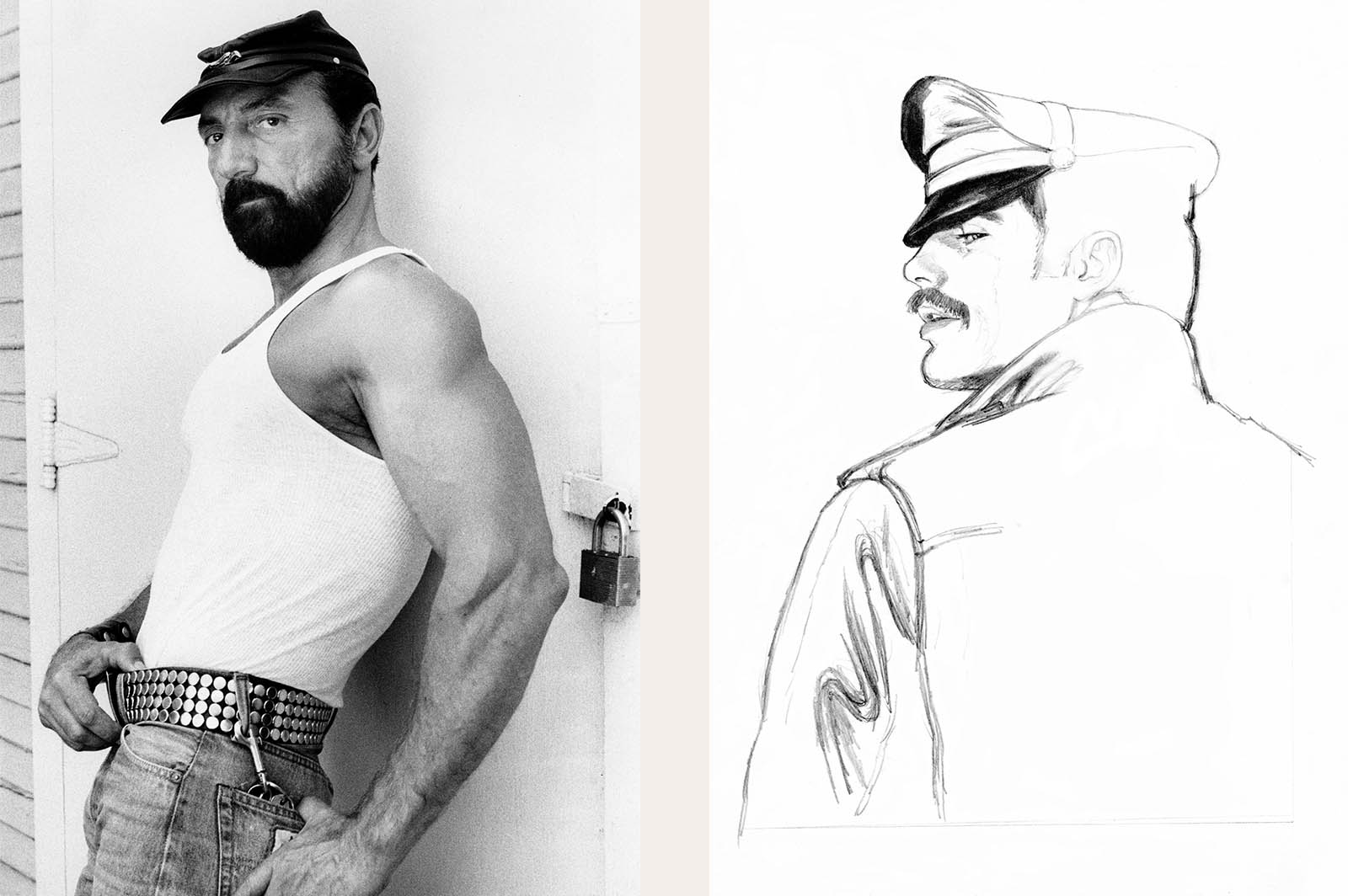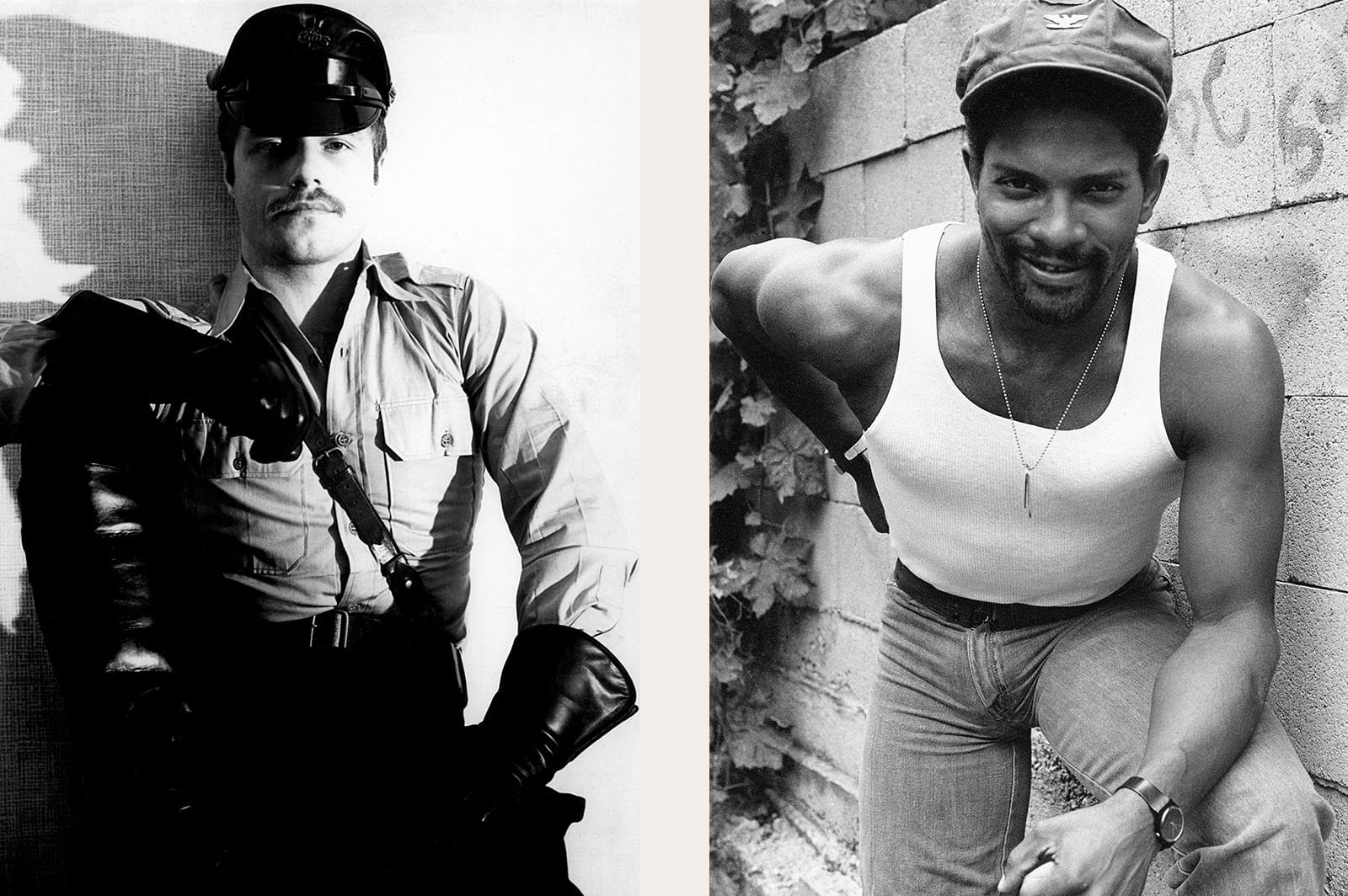The story of how a former Finnish soldier turned advertising man named Touko Laaksonen with a self-taught gift for draftsmanship and a wild fantasy life went from penning gay pornography to instigating a cross-continental leather subculture to becoming a widely celebrated visual artist with a subversive and instantly recognizable visual aesthetic, is certainly one of the more surprising stories of artistic success.
The artist is, of course, Tom of Finland, and today his work is seen everywhere from major art museums to oven mitts, a trajectory that has taken him far beyond the illicit, underground world of homoerotic art where he made his start. Across a prolific forty year career, Tom introduced the world to one entirely of his own making—reshaping gay culture, and making a lasting impact on visual culture writ large.
What is lesser known—but now coming to light with a new show at Fotografiska—is the role of photography across the phases of his career: first as an essential tool to service his international clientele, then as a means to construct his drawings, and later, to document the personas of his models who were being erased by AIDS. What’s clear is that Tom of Finland’s use of photography was crucial to his evolution as an artist.
In advance of our Frieze Week panel discussion on Tom of Finland’s life and work, featuring artist (and friend) Nayland Blake, publisher Rodolphe Lachat, and the Tom of Finland Foundation, Neuehouse gathered insights from those who knew this renegade artist and his work intimately, bringing us a new perspective.

Rodolphe Lachat, Publisher: I discovered the work of Tom of Finland probably twenty years ago in a gay bookstore in Paris. They had a full shelf full of his work. I was just amazed. It was both very attractive and very repulsive. Beautiful men. But also a lot of cliche. I wasn’t into leather. It looked to me like an old gay world that I was not part of. Then, many years later, I went to Venice for the Biennial where I discovered some original Tom of Finland [works]. I discovered how his art was incredible, how he was gifted. When you see a drawing by Tom of Finland in person, you are amazed by the quality. It’s really something to see in person. One of my friends told me that the difference between a great artist and a great illustrator is that an illustration will always be better printed, an artist will never be as good as in person. That’s what I saw at that moment. With him, you could see that it was kind of easy. There is so much life. A lot of people dismiss his drawing—“It’s just a lot of men having sex”—but they’re missing something important: the sense of humor. It’s a lot of humor. And you can feel that in the drawing. They’re all smiling. Nothing is serious. It’s a lot of having fun.

“He provides a sense of freedom—happy sexuality.”
Durk Dehner, Partner, Muse: The thing that people say to me the most is that he makes them feel happy. He provides a sense of freedom—happy sexuality. And that was what he wanted. He grew up in a time where there was a lot of guilt. He wanted to see if he could do something to alter that. Even though he didn’t want to admit it, he realized right from the beginning that he had always wanted to see if he could actually affect culture, affect the way homosexuals saw themselves, the way heterosexuals saw homosexuals…He could have sacrificed all of that and gained more notoriety in the fine art world, but he was unwilling to do that. The individuals he was really shooting for were young homosexuals who needed some role modeling. And he wanted to provide that to them, so they could be empowered by his drawings. Which in fact is exactly what took place, and continues to take place.

Rodolphe Lachat, Publisher: When I see his pictures, I see the testimony of that moment. I think about other photographers like Maplethorpe. The way they describe not only a body but an idea of being gay at that moment. I don’t see just naked pictures or body type, I see him trying to describe both his gay world and the gay world he dreamed of—the gay paradise. He was dreaming a lot. He was living his fantasy. The story of TOF is a story of a man who is extremely gifted who became famous in doing porn comic books. It’s very unique. He just continued to draw and photograph. He had the choice to change. He just continued to do the same thing. Which is beautiful. And living all day in that world in his house surrounded by this community, his muse. It was more than just an artist living and drawing by himself, it was his life.

Nayland Blake, Artist: You’re presented with a situation where there’s a world, a universe. He structures the drawings around the ways people look at each other rather than a one-to-one interaction between the viewer. Tom’s work served to undermine the traditional images of power in western society. He took the macho figure and sexualized it. He went on to become one of the major icons of sexuality in our culture today.


